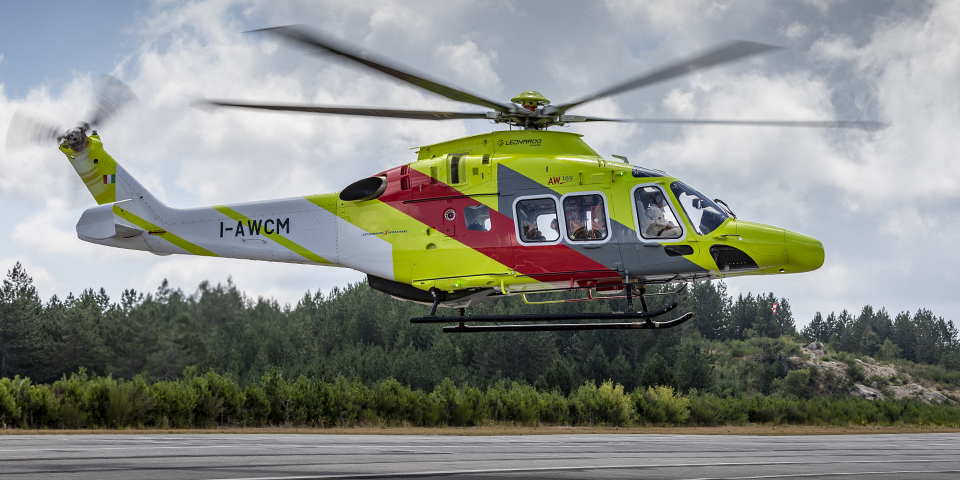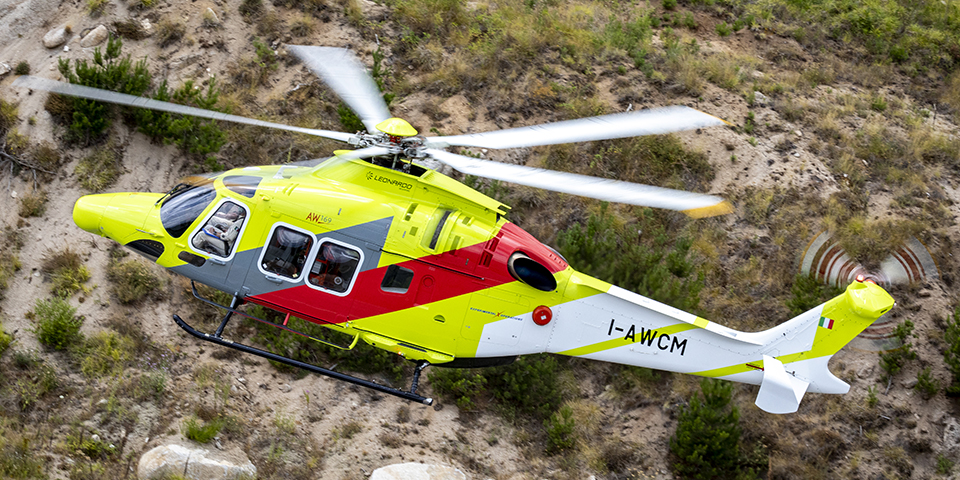Why did Leonardo Helicopters begin to investigate the possibility of developing an auto-landing capability and why was the AW169 chosen as the platform?
Leonardo is investing heavily in research and innovation, while maintaining a strong focus on safety, especially when it comes to our aerospace products. A historical insight into special and military operations involving rotorcraft, shows an unacceptably high attrition rate due to accidents with helicopters attempting to land/takeoff in brownout/whiteout conditions.
The entire cycle of helicopter operations in Afghanistan and Iraq shows that three out of four of the many events that occurred there were the result of crews losing external visual reference with severe consequences, not only in financial terms, but most importantly, in lives lost. We believe that this new level of automation will significantly alleviate these losses in military applications and beyond.
The AW169 is one of our latest products, with an aggressive roadmap and is well designed to enable the timely introduction of new capabilities. Automatic Landing is just one among a list of our new upcoming features.
What sort of in-flight conditions is the system designed to overcome?
Brownout and whiteout typically occur in the hover flight regime, where the velocity imprinted on the mass of air accelerated through the main rotor generates a cloud of particles, dangerously reducing external visibility down to zero. The Automatic Flight Control System (AFCS), at the pilot’s command, controls the landing phase providing support in any situation where external visibility is degraded. Obviously, mastering the adequate level of precision in controlling the rotorcraft trajectory, all the way down to ground contact, is the key.
How does the technology work? Can you explain what actions the pilot flying needs to take? At what point in the flight can the auto-landing capability be activated?
The basis of this technology revolves around the ability to merge the control of a set of multiple variables into a single task resulting in the execution of an automated landing, while at the same time granting the appropriate level of redundancy and failsafe characteristics. All this is initiated as soon as either the pilot or the autopilot brings the rotorcraft within the hover flight regime, at which point a single push of a button on the collective launches the Auto-Landing function. The entire sequence is seamless from the pilot point of view and can be flown, virtually, with zero workload all the way to touchdown. Once on the ground, the automated sequence is completed with the centring of all the pilot’s flight controls.
Does the system require any ground-based infrastructure?
The level of sophistication of the sensors installed on our products allows full performance navigation and flight capabilities. Thanks to the use of inertial components installed on board, it is possible to automate landing, even if navigation signals provided by ground-based or satellite-based infrastructure should not be available.

Tell us about the role of the Digital Simulation Lab. How important is this strategic asset for the Helicopters Division and what are the key benefits in terms of maturing the technology?
In the last decade, the helicopter market trend has imposed on OEMs an accelerated pace with less and less time available between demand and delivery. In this context, a key role is played by the concept of process innovation. It is less evident if compared to product innovation, which remains more visible to the market, but at the same time, it is second to none with respect to the broadest concept of innovation in all its forms. The Digital Simulation Lab is a key enabler to keep up with this accelerated pace of development. It allows:
• Time (cost) reduction and increased safety in the execution of experimental flight activities
• Fast prototyping of new control laws
• Easy design, modification and testing of Human/Machine Interface protocols
• Interaction with other disciplines, also when geographically distributed in the world, thanks to its accessibility and connectivity.
All this represents, within Leonardo, a strategic asset. In our case, most of the preliminary design and development of the auto-landing function has been completed leveraging on the strong flexibility of the Digital Simulation Lab.
When did the development programme begin and what stage is it at now?
After a preliminary examination of the potential of the programme, we initiated a few months ago, full development of this new capability. Today we are ready to present it to the Certification Authority. We expect to deliver it to our customer by the end of this year.
What has been your role in the development programme?
In Leonardo we work in teams within projects, so I would see my role as the ‘operational- based’ element of expertise within the AW169 project, in a framework of integration with all other scientific and programme disciplines, in close co-operation with my colleagues.
Can you explain the most important benefits of having this capability available on the AW169 – in terms of safety and other aspects?
Brownout or whiteout flight conditions are inevitably indicators of a harsh and dangerous environment within which pilots must perform at the peak of their training, experience and motivation. We are obliged to make every effort possible to relieve this pressure in the best way. To achieve this, our product has to inspire reliability, performance and effectiveness to the pilot. This new function is one of the steps forward we are taking in this direction.
Speaking about other aspects, undoubtedly, from a technical point of view, the ability, that I mentioned at the beginning, to master such a complex way to control the rotorcraft trajectory, in this critical portion of the flight envelope, paves the way in preparation for the introduction of ideas which will follow in the near future.

What are the next steps in the programme?
Today, thanks to the effort invested in developing this new approach, we know we can design very complex control laws with a high degree of precision and reliability. This opens up a proliferation of additional derived capabilities. For the time being, it is too early to disclose further details.
Is the long-term idea to extend this capability to other platforms – for example, across the AW Family?
By design, the AW Family of products is engineered with strong commonality. Importing any improvement from the AW169 to AW139 and AW189, or vice versa, is only a matter of software upgrades. I believe that such a relevant new capability will certainly become a common standard across the AW Family.
Can you explain how development of this innovative capability fits into Leonardo Helicopters’ wider commitment to innovation that benefits customers’ operations?
Historically, our brand has always been synonymous with responding carefully to any specific requests put forward by our customers, who quite often have very demanding operational requirements. We always take on the challenge. Obviously, this will never change, being in our DNA. Today, we are simply taking it to an even higher level, thanks to a structured approach that exploits a new course, based on innovative technologies. So I believe that the easiest answer to your question could lie within a simple statement of ‘a continued tradition in innovation’. This will certainly benefit our customers.

